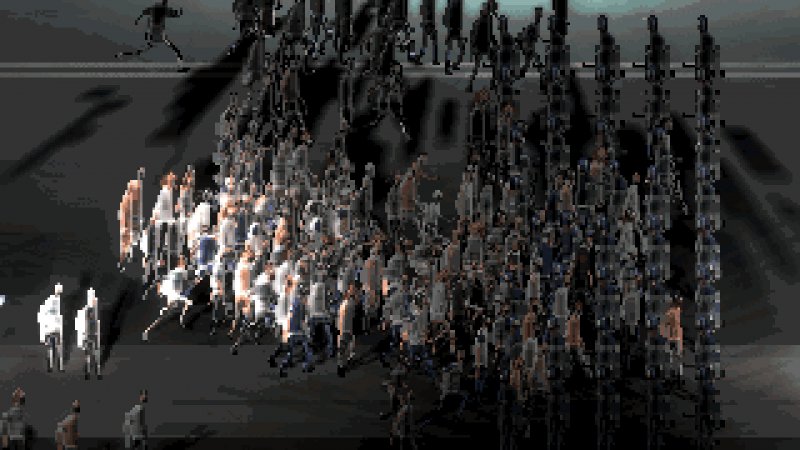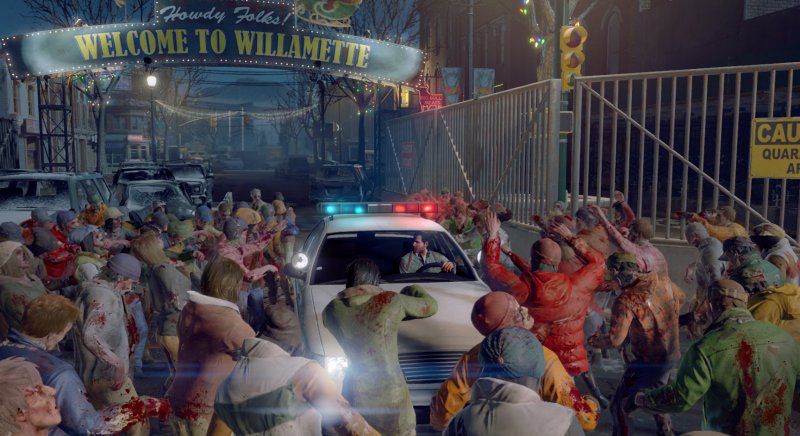It was the distant 2014 when Leonard Menchiari decided to launch a campaign on Indiegogo with the sole objective of financing his videogame creature. Emotionally stimulated by the No TAV protests experienced in first person in Val di Susa and artistically by that masterpiece of Capybara that responds to the name of Sword and Sworcery,Leonard pointed up announcing
that he was able to make a civil protests simulator aesthetically marvelous and contentiously unexceptionable. And the market proved him right, given that in a few weeks he managed to take home more than twice as much money as crowdfunding. A financing campaign that already paled in response to the demands of many other independent projects, being just $ 20,000, but that today would probably also be less credible given the development costs of today’s market.
And indeed something must have happened during the genesis of the game because after the first announcements of a demo and the final release within that year, and only a new video with some additional information during 2015, the title remained wrapped in an aura of mystery, dragging itself through a probably very complex development phase.
Today we’ll talk about it because, surprisingly, we finally managedto test the semi-definitive version that, just as you are reading these lines, is available in early access on Steam for € 12.99. Follow us in the following paragraphs because we will try to make you understand what is actually RIOT – Civil Unrest and if it is worth the wait so long to play it.
ACAB
The core of the game consists of a single player campaign divided into four different scenarios, each self-conclusive in terms of story and events told and composed of a variable number of schemes for a total of 16 levels. Each of these can be faced by siding and controlling the rioters, or by managing the police force, doubling the total number of playable scenarios.
The two sides are brought in dowry mechanical game completely different that not only concern the real gameplay once you get off the road, but also the stage of preparation for urban warfare.
The agitators foresee an initial phase in which their team is composed in terms of flags and banners, body protection, hostility and training.Working on these four variables changes not only the attitude of the protestors and their stage presence but also the actual number of people participating in the protest. It is also possible to choose four different gadgets that the rebels will bring: here the choice ranges through urban guerrilla tools such as Molotov,
firecrackers and stones to defense objects or more general utility such as the megaphone to group people at a specific point, the laser pens to disturb the police, the maalox to reduce the effects of tear gas or the use of social media to get reinforcements during the protest, sometimes even in the form of media presence.
In the case of policemen, on the other hand, the initial management phase is more similar to that of a strategic one in real time with heroes. We will have to configure the composition of the six squadrons, divided into assault units, ballistics and tactics,
setting for each armor, the weapon embraced (being able to also opt for real ammunition), any equipped object (smoke bombs or stun, or a radio to create discipline in the ranks and more) and any protective mask. In this case the composition of each unit will have a precise cost in points that will determine the final budget of
the police deployment which, in turn, will determine the number of protesters took to the streets.In both cases it is a basic system of causes and effects that must be taken into account and which in some ways also conditions the difficulty
level of the scenario: the more we decide to take the field equipped and armored and the other side will be more resistant .
Once the level is started, the real game is controlled as a sort of strategic: Protestants and police are divided into groups that we can move to make them reach certain positions, while the front keys of the joypad and the digital cross are dedicated to use gadget or the advanced management of the group to set up for example the training or the degree of hostility on the ground.
In reality, it soon becomes clear that real-time strategic mechanics is strongly influenced, and at times heavily managed, by artificial intelligence that not only controls the forces of the opposing faction, but also determines the attitude of one’s own faction.
Situations of panic, charges or attempts to break through the police cordon are only partly in the hands of the player, since more often the crowds and military units will move in total autonomy and often even in a disorganized way reacting to what happens around they are either completely useless if not properly equipped or stimulated to be more aggressive.


